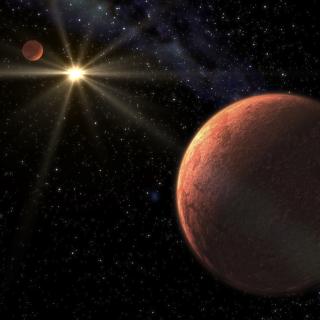Bibcode
DOI
Wang, Y.; Jones, H. R. A.; Smart, R. L.; Marocco, F.; Pinfield, D. J.; Shao, Z.; Steele, I. A.; Zhang, Z H..; Andrei, A. H.; Burgasser, A. J.; Cruz, K. L.; Yu, J.; Clarke, J. R. A.; Leigh, C. J.; Sozzetti, A.; Murray, D. N.; Burningham, B.
Referencia bibliográfica
Publications of the Astronomical Society of the Pacific, Volume 126, issue 935, pp.15-26
Fecha de publicación:
1
2014
Número de citas
11
Número de citas referidas
7
Descripción
We report the parallax and proper motion of five L dwarfs obtained with
observations from the robotic Liverpool Telescope. Our derived proper
motions are consistent with published values and have considerably
smaller errors. Based on our spectral type versus absolute magnitude
diagram, we do not find any evidence for binaries among our sample--or,
at least no comparable mass binaries. Their space velocities locate them
within the thin disk, and based on the model comparisons, they have
solar-like abundances. For all five objects, we derived effective
temperature, luminosity, radius, gravity, and mass from an evolutionary
model (CBA00) and our measured parallax; moreover, we derived their
effective temperature by integrating observed optical and near-infrared
spectra and model spectra (BSH06 or BT-Dusty) at longer wavelengths to
obtain bolometric flux using the classical Stefan-Boltzmann law.
Generally, the three temperatures for one object derived using two
different methods with three models are consistent, although at lower
temperature (e.g., for L4) the differences among the three temperatures
are slightly larger than those at higher temperature (e.g., for L1).
Proyectos relacionados

Estrellas de Baja Masa, Enanas Marrones y Planetas
Se investigan los procesos que conducen a la formación de estrellas de baja masa, enanas marrones y exoplanetas y caracterizar las propiedades físicas de estos astros en varias etapas evolutivas. Las estrellas de muy baja masa y las enanas marrones son probablemente los objetos más numerosos de nuestra Galaxia, pero no por ello están
Rafael
Rebolo López